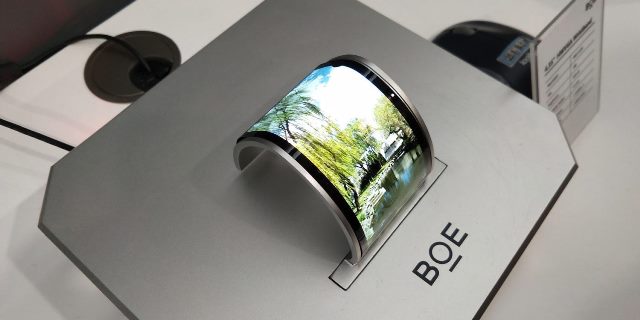BOE announced its plan to acquire 80.831 percent share in CEC Panda’s Nanjing-based Gen 8.5 fab and 51 percent share in CEC Panda’s Chengdu-based Gen 8.6+ fab.
 After BOE’s B17 (Gen 10.5) fab began operating in 2020, the company now possesses about 21.1 percent of the global large-sized panel capacity, TrendForce report said.
After BOE’s B17 (Gen 10.5) fab began operating in 2020, the company now possesses about 21.1 percent of the global large-sized panel capacity, TrendForce report said.
CEC Panda’s Nanjing-based Gen 8.5 fab and Chengdu-based Gen 8.6 fab accounts for about 4.7 percent of the global total. As such, if the acquisition takes place successfully, BOE will possess more than a quarter of the global large-sized panel capacity, and this share is expected to further increase to 28 percent in 2021.
With the acquisition of CEC Panda, BOE’s market share in Large Area LCD will be over 25 percent to be a total dominant display maker.
BOE will also get the access to the VA (Vertical Alignment) LCD technology, Oxide TFT technology and strengthen its leadership in LCD TV, Notebook PC and LCD Monitor market, Omdia report said.
BOE is the shipment leader in product categories including TV, monitor, and notebook panels. Once CEC Panda’s Nanjing-based Gen 8.5 fab and Chengdu-based Gen 8.6 fab start contributing to BOE’s panel shipment, BOE is expect to raise its market share in the TV panel market from 18.5 percent to 23.3 percent.
Similarly, BOE’s shares in the monitor panel market and notebook panel market will likely grow from 27 percent to 31.7 percent and from 27.3 percent to 31.5 percent, respectively, allowing the company to further its market share advantage over its immediate competitor, TrendForce said.
Given BOE’s IPS R&D and CEC Panda’s focus on VA panels for TV, the acquisition is expected to both provide a complementary product portfolio for BOE and deepen its partnership with tier-one brands.
In addition, CEC Panda’s Gen 8.6 fab will likely shore up BOE’s lack of 50-inch and 70-inch capacities, expanding its TV panel offerings for those display sizes. Both companies have been focused on IPS panels for notebook displays.
BOE’s notebook panels are for the most part based on a-si technology. CEC Panda’s offerings are primarily IGZO-based, giving them the advantage of low power consumption. The acquisition will allow BOE to compensate for its weaker presence in IT products, such as gaming notebook panels or low power consumption panels, with CEC’s IGZO offerings.
BOE’s acquisition of CEC Panda will cause ripples throughout the display supply chain, since the latter has been operating in close partnership with TPV, which is the largest monitor OEM globally under the parent company CEC.





